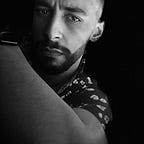Alfred Hitchcock’s adaptation of Robert Bloch’s novel Psycho provides an interesting insight and alternate version. With the adaptation, viewers also notice how the film essentially takes on a life of its own — with evident changes to the names and characterizations, Mary to Marion, and Norman Bate’s characterization.
On the topic of Mary and Marion, one should consider the initial scene in the Hitchcock film instead of the novel. When the film opens with Marion and Sam having an ‘afternoon session,’ viewers will notice much of the oppositional differences with the film’s characterization of Mary and Marion. While Mary and Marion are in love with Sam, the differences between film and novel are ones of setting, points of interest (i.e., where they’re from and how they met), the eventual lack of interest for Sam in the book as opposed to Marion in the film, Mary and Marion’s viewpoints on Sam’s financial situation — all to say, leaves one to make the initial question upon viewing/ reading Psycho, is this a film about her and her antiquated beliefs on what is it to be a proper lady? However, one notable difference that should be noted is her decision to steal the money from the businessman. While in the novel, readers can notice how Bloch makes Mary switch cars three times before arriving in Kansas, the film version does not. Hitchcock’s version of the film gives viewers a sense that Marion never really thought about her plan and only came up with her plan after encountering the officer. It is after that where she makes it to the Bates Motel.
Norman Bate’s characterization and storyline in both film and novel are other factors viewers and readers should consider. While Norman Bates is an unlikeable character in both film and novel, one should also consider the psychological trauma Norman has had to endure/ enduring and the repercussions of that trauma through his perception of women due to his mother. While watching the film, viewers might also find Hitchcock’s possible intent to define Norman as someone with maternal issues who wouldn’t know what to do with himself without his mother as another difference from the novel, as Bloch wrote the character of Norman Bates as a more apparent murderer. A prime example of the two is that the film makes viewers question if the mother was still alive and murdering and the novel not leaving to question readers. However, what doesn’t change is that both viewers and readers grasp the severity of Norman Bates’s trauma-induced dual personality through the murdering and plotline. Much of which is seen when viewers find Norman dressed as his mother or the close-up of his dead mother, leaving us with the realization of such mental instability Norman is going through. Hutcheon puts it best by stating:
“External appearances are made to mirror inner truths. In other words, visual and aural correlatives for interior events can be created, and in fact, the film has at its command many techniques that verbal texts do not. The power of that close-up, for example, to create psychological intimacy is so obvious (think too of Ingmar Bergman’s films) that directors can use it for powerful and revealing interior ironies…’ (Hutcheon).
Nonetheless, these factors change the nature of the novel and give the film adaptation a sense of its own Alfred Hitch-cokian repertoire as opposed to the Robert Bloch novel. While Norman was dangerous in both film and novel, Hitchcockdid a fabulous job making his character a lot more complex than the novel. One should not only consider the time in which the film and novel were released, but the ever-foreboding trauma Norman had to endure from his mother, and truly question if readers and viewers should fully demonize him as an individual per form of media or as a whole character.
Works Cited
Hutcheon, Linda. “What? (Forms).” Hutcheon, Linda. A Theory of Adaptation. n.d. 58–59.
Bloch, Robert. Psycho. New York, Crest, 1960.
Psycho. Alfred Hitchcock. Paramount Pictures, 1960.
